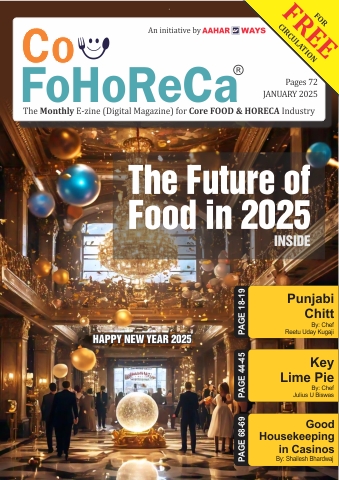Integrating Technology: How Apps and Automation Are Changing Restaurants
This evolution not only improves operational efficiency but also elevates the dining experience, meeting the ever-changing expectations of customers.
In today's fast-paced digital world, technology is reshaping
every industry, and the restaurant sector is no exception. From mobile apps
that streamline customer experiences to automation that enhances kitchen
efficiency, technology is becoming an integral part of how restaurants operate
and serve their patrons. This evolution not only improves operational
efficiency but also elevates the dining experience, meeting the ever-changing
expectations of customers.
One of the most significant technological advancements in restaurants is the rise of mobile applications. These apps have transformed how customers interact with dining establishments, allowing them to browse menus, place orders, and even pay without needing to wait for a server. With just a few taps on their smartphones, diners can explore their favorite dishes, read reviews, and access loyalty programs that reward repeat visits. This convenience is particularly appealing to younger generations who prioritize speed and efficiency, fostering a seamless experience that enhances customer satisfaction.
Moreover, mobile apps provide valuable data insights for restaurant owners. By analyzing customer preferences and behaviors, establishments can tailor their menus and marketing strategies to better meet the needs of their clientele. For instance, if a restaurant notices a spike in orders for a particular dish, they can promote it further or introduce similar options to capture more interest. This data-driven approach not only optimizes menu offerings but also helps in inventory management, reducing food waste and maximizing profits.
Another critical area where technology is making waves is in kitchen automation. Modern restaurants are increasingly adopting automated cooking equipment and robotics to streamline food preparation processes. For example, automated fryers and grills can ensure consistent cooking times and temperatures, reducing the risk of human error. Additionally, robots are being introduced to perform repetitive tasks like flipping burgers or assembling pizzas, freeing up kitchen staff to focus on more complex culinary tasks. This not only improves efficiency but also enhances food quality and safety, as machines are less prone to contamination.
Self-service kiosks are another technological advancement that is gaining traction in the restaurant industry. These kiosks allow customers to place their orders independently, reducing wait times and minimizing the burden on staff. The self-service model is particularly popular in fast-casual dining settings, where quick service is paramount. By streamlining the ordering process, restaurants can improve operational efficiency and customer throughput, ultimately leading to higher sales volumes.
In addition to improving operations, technology also plays a significant role in enhancing the dining experience. Augmented reality (AR) and virtual reality (VR) technologies are being integrated into some restaurant settings to create immersive dining experiences. For instance, diners can use AR apps to visualize dishes before ordering, providing a more interactive way to choose their meals. This innovative approach not only entertains customers but also helps them make informed decisions, potentially increasing their satisfaction with the final product.
Online reservation systems have also revolutionized the way restaurants manage bookings. Gone are the days of waiting on hold for a table; customers can now reserve their spots through user-friendly apps and websites. This technology enables restaurants to optimize their seating arrangements and manage foot traffic more effectively, ensuring that customers have a seamless experience from start to finish. Additionally, reservation systems often allow for special requests, making it easier for restaurants to accommodate dietary restrictions or preferences.
However, integrating technology into restaurants does come with its challenges. Many establishments must invest in training staff to use new systems effectively, which can require time and resources. Additionally, there is a growing concern about maintaining a personal touch in an increasingly automated environment. While technology offers numerous benefits, it is essential for restaurants to strike a balance between efficiency and the warmth of human interaction that customers often seek.
As the restaurant industry continues to evolve, the integration of technology will likely play an increasingly prominent role. Innovations in apps and automation are not merely trends; they represent a fundamental shift in how restaurants operate and connect with their customers. By embracing these technological advancements, restaurants can enhance efficiency, improve customer satisfaction, and ultimately thrive in a competitive landscape. The future of dining is not just about great food; it's about creating an experience that seamlessly blends culinary excellence with technological innovation, ensuring that every meal is memorable.
.png)





























